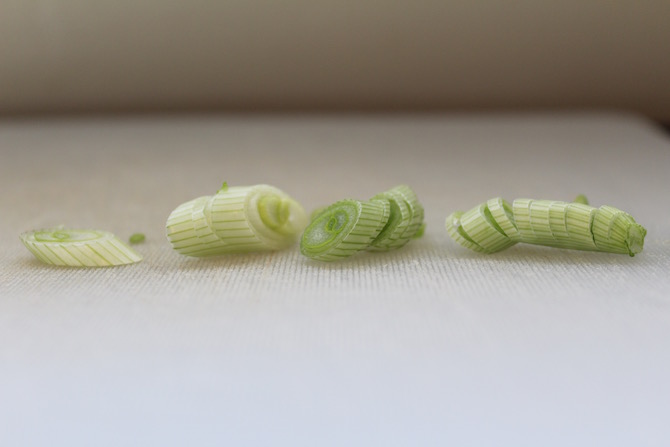If you don’t normally require a microwave when cooking, it’s a safe bet your cutting board gets a lot of use. Too often, cutting boards are warped, split, flimsy, or just dulling your knives at a ridiculous rate.
What Makes a Good Board?
1. Stability

Photo by Cheryl Ching
Nothing is more annoying than a board that doesn’t sit flat on your table. Even a slightly uneven board means that your knife can never make perfect contact with your cutting surface. The most flimsy boards have your vegetables rolling all over the place.
2. Durability

Photo courtesy of The Kidless Mommy
A good board should last you a long time. You can get the plastic OXO Good Grips cutting board, which will last you forever for $25. It doesn’t make sense to buy a $10 cutting board if it means you’ll have to buy another one in a year’s time.
It’s also annoying when wooden cutting boards split or warp since they are relatively expensive. If something that is $25 can last forever, you are going to want your much more expensive wooden board to do so too.
3. Not damaging to your knife
Photo courtesy of Not on the High Street and The Kitchn
If you’ve put money into good knives it doesn’t make sense to use a cutting board that dulls your knife. Glass cutting boards have been shown to significantly dull knives after as few as 10 slices. Marble boards don’t do too much better.
You Only Need 2
Wood and plastic are the two most popular choices in terms of materials. Whatever you end up going with, it is still recommended that you own at least two boards; one for fruits and vegetables and one for raw meats. Cross contamination will ruin your day.
Suggested Materials
Wood

Photo by Cheryl Ching
There are many types of wood, as well as many different construction methods. In the end it’s up to you. It’s really your choice whether you want a “softer” board or a “harder” board.
Softer woods result in your knives sinking into the wood or being “gripped” more. Harder woods feel great under your knife but are sometimes more susceptible to cracking.
Another thing to think about is the fact that wood absorbs the smell of the liquids it absorbs. This is especially true with fats. This is why many opt to exclusively cut fresh fruits and vegetables on their wooden boards.
Plastic

Photo by Cheryl Ching
Plastic boards are the most popular material. A good plastic board is very durable, requires little to no effort to maintain, and in some cases are dishwasher safe. They are the best material in terms of convenience and cost. The only con is that they don’t feel as nice as wood.
Most people prefer to cut raw meats on a plastic cutting board because it does not absorb the smell of liquids and they are easy wash.
Suggestions
Two cutting boards stood out after America’s Test Kitchen’s rigorous tests were performed. For the wood category, the Proteak edge grain cutting board faired best. The OXO good grips plastic cutting board won the plastic category.
Ultimately, everyone values different things, but at $25, the OXO good grips plastic cutting board is the best reason to not have a crappy board.
More on kitchen tools and techniques:

